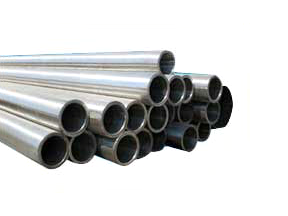Pneumatic Cylinder Barrel: Core Structure, Working Principle, And Selection Guide
Release time:2026-01-05
Visits:0
As a core component of pneumatic actuators, the pneumatic cylinder barrel serves as a critical carrier for energy conversion in industrial automation. By transforming the potential energy of compressed air into linear mechanical motion, it drives equipment to perform pushing, pulling, lifting, clamping, and other actions, playing an irreplaceable role in numerous industrial scenarios. A complete pneumatic cylinder system typically includes a cylinder barrel, piston assembly, sealing mechanism, and front/rear end caps, where the quality of the cylinder barrel directly impacts equipment operational efficiency and service life.

High-Strength Materials: Premium pneumatic cylinder barrels are often manufactured using aviation-grade aluminum alloy, 304 stainless steel, or specially coated steel. These materials not only offer corrosion resistance but also withstand mechanical stress in high-pressure environments. Aluminum alloy provides advantages in lightweight design and heat dissipation, while stainless steel barrels excel in harsh conditions such as humidity and high acidity/alkalinity.
Precision Machining Technology: The inner wall of the cylinder barrel undergoes honing or polishing, with surface roughness controlled below Ra0.4μm to minimize frictional resistance during piston movement. Some high-end models feature hard chrome plating on the inner wall to further enhance wear resistance and impact capability.
Dynamic Sealing Design: Combined seals made of polyurethane or fluororubber prevent gas leakage while adapting to pressure fluctuations caused by piston reciprocation. Special groove structures avoid seal distortion and damage from high-speed movement.
Environmental Adaptability: Through surface treatments like anodization and electroless nickel plating, cylinder barrels can withstand temperatures ranging from -20℃ to 150℃ and maintain long-term stable operation in dusty, oily, and other complex environments, with a service life exceeding 5 million reciprocating cycles.
Analysis of Energy Conversion Principle
When compressed air is injected into the air chamber through the front end cap inlet, the pressure difference drives the piston to displace toward the low-pressure side, outputting linear thrust via the piston rod. By adjusting the solenoid valve's commutation frequency and intake flow, the piston's movement speed and stroke position can be precisely controlled. The buffer device on the rear end cap absorbs the piston's terminal impact force, ensuring smooth operation without jitter. In practical systems, double-acting cylinders achieve bidirectional movement through alternating air supply, while single-acting models rely on spring return.
Industry Application Scenarios
In automotive welding production lines, pneumatic cylinder barrels drive welding torches to achieve millimeter-level positioning; food packaging machinery relies on their rapid clamping function to perform 120 sorting and packaging operations per minute; medical equipment uses clean-type cylinders to control hospital bed lifting and ventilator valve opening/closing. Additionally, in robotic joint modules, CNC machine tool fixtures, and warehouse logistics distribution systems, the high-frequency response characteristics of pneumatic cylinder barrels significantly improve equipment automation levels.
Key Maintenance Technical Points
1. Preventive Inspection: Check seal elasticity and cylinder barrel inner wall wear every 3,000 operating hours. If axial scratch depth exceeds 0.05mm, replace immediately.
2. Contamination Control: Install a 5μm precision filter at the intake end and regularly clean air storage tanks to prevent moisture, rust, and other particles from entering the cylinder and causing cylinder scuffing failures.
3. Lubrication Management: Use ISO VG32 grade pneumatic-specific lubricating oil,补充 lubricant monthly via an oil mist device, and strictly prohibit using grease with excessive viscosity to avoid seal swelling.
4. Pressure Calibration: Maintain a stable working pressure range of 0.4-0.8MPa, with instantaneous peaks not exceeding 1.5 times the rated pressure. Install a pressure reducing valve for dynamic pressure regulation.
Selection Decision Parameters
- Bore Size: Available in diameters from 20mm to 320mm, selected based on load to calculate theoretical output force (Formula: F=π×D²/4×P, where D is bore diameter and P is air pressure).
- Stroke Precision: Standard stroke error should be less than ±0.5mm. Magnetic piston configurations can achieve position closed-loop feedback with sensors.
- Mounting Types: Flange mounting suits radial force scenarios, trunnion mounting facilitates equipment swinging requirements, and compact micro-cylinders often use threaded end cap direct connection.
- Special Requirements: Explosion-proof environments require copper alloy materials; food and medical industries prioritize stainless steel models with FDA certification.
Scientific selection of pneumatic cylinder barrels requires comprehensive consideration of equipment load characteristics, action frequency, and environmental parameters. It is recommended to conduct dynamic analysis using 3D simulation software and reserve over 20% performance redundancy based on actual working conditions to build an efficient and reliable pneumatic control system.
